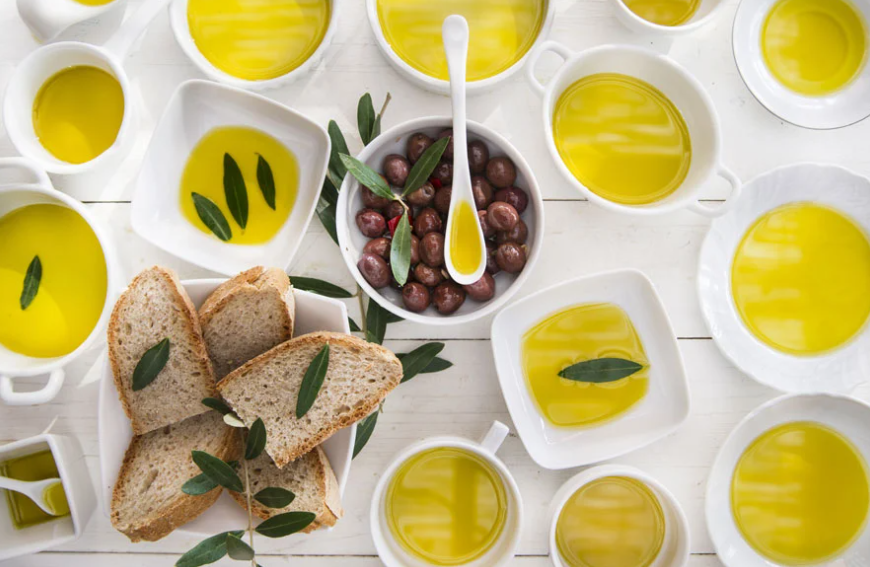
Host an Artisan Olive Oil Tasting
Hosting an olive oil tasting is a delightful way to explore one of the Mediterranean’s most cherished ingredients. With a little preparation and a focus on sensory details, you can create an engaging and educational experience that celebrates the diversity and nuances of extra virgin olive oils.
Begin by selecting a range of olive oils that showcase different regions, cultivars, and production methods. Choose oils from various countries such as Italy, Spain, Greece, and even some local artisanal producers if available. This diversity will not only illustrate the spectrum of flavors—from grassy and fruity to peppery and robust—but also tell the story of olive oil’s rich history and cultural significance.
Create a welcoming environment for your guests by setting a rustic yet elegant table with natural linens, wooden boards, and small tasting glasses or dip bowls. Consider adding subtle decorative elements such as sprigs of rosemary, olive branches, or small bowls of sea salt. These touches not only enhance the visual appeal but also remind your guests of the ingredients’ natural origins.
Before the tasting begins, provide your guests with a brief introduction to olive oil. Explain the difference between extra virgin olive oil and lower grades, emphasizing how the production process influences flavor and quality. Offer tasting notes that highlight the oil’s aroma, mouthfeel, and finish. Encourage guests to observe the color and viscosity, as these can be clues to the oil’s flavor profile and harvest time. An engaging narrative about the regions of origin, the olives used, and traditional production methods can elevate the tasting from a simple sampling to a cultural journey.
Structure the tasting in a way that allows for thoughtful evaluation. Begin with milder oils and progress to those with stronger, more robust flavors. Serve each oil in a small glass or bowl with a matching spoon, and consider providing a light, neutral palate cleanser such as warm, crusty bread or a simple cracker. Adding a small dish of fruit, like apple slices, can also help cleanse the palate and allow the oils’ distinct flavors to shine through.
Encourage guests to use all their senses during the tasting. Ask them to first observe the oil’s color and clarity, then gently swirl it in the glass to release its aroma. Inhale deeply, and note any hints of fruit, herbs, or even a subtle bitterness that signals a higher polyphenol content. Finally, have them taste the oil, taking a small sip and letting it coat their palate. Guide them to look for flavor notes, textures, and the oil’s finish. A discussion about personal preferences can spark lively conversation and enhance the communal experience.
To add an interactive element, provide tasting scorecards where guests can note their observations for each oil. This activity not only makes the event more engaging but also gives everyone a chance to compare notes and learn from one another’s insights.
As the tasting comes to a close, consider pairing the olive oils with complementary foods. Dishes such as a simple caprese salad, a light bruschetta, or even a citrusy dessert can further highlight the oils’ versatility. Hosting an olive oil tasting is not only an exploration of flavors but also a celebration of the ingredient’s integral role in Mediterranean cuisine. With careful planning and a touch of creativity, your tasting event will leave guests inspired and eager to incorporate these golden elixirs into their culinary adventures. Enjoy the journey of discovery, and let the olive oil tell its delicious story.
